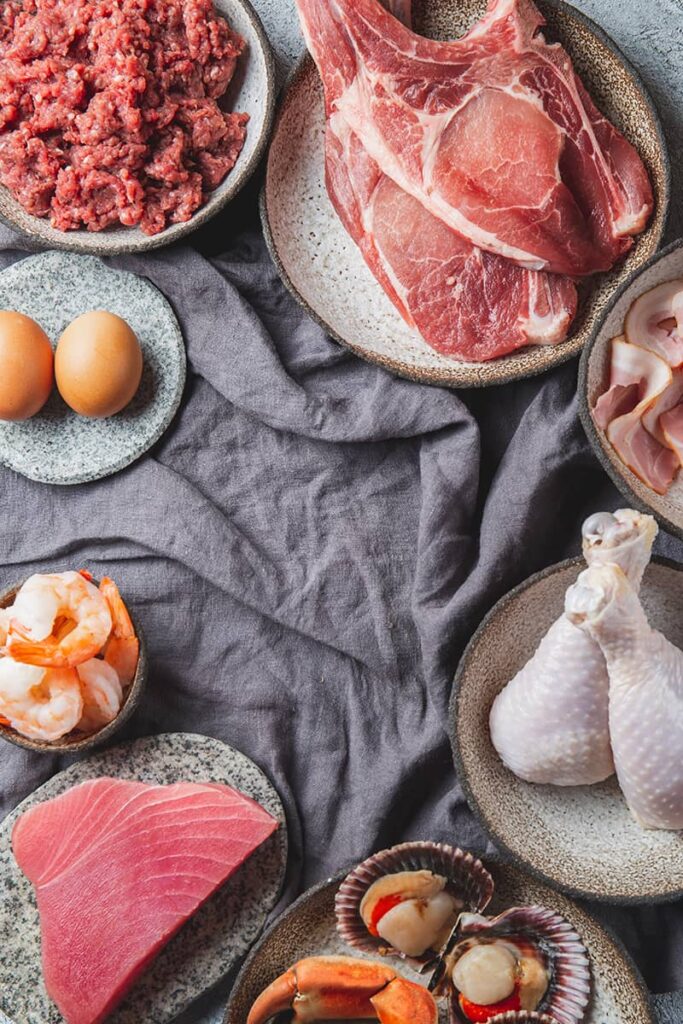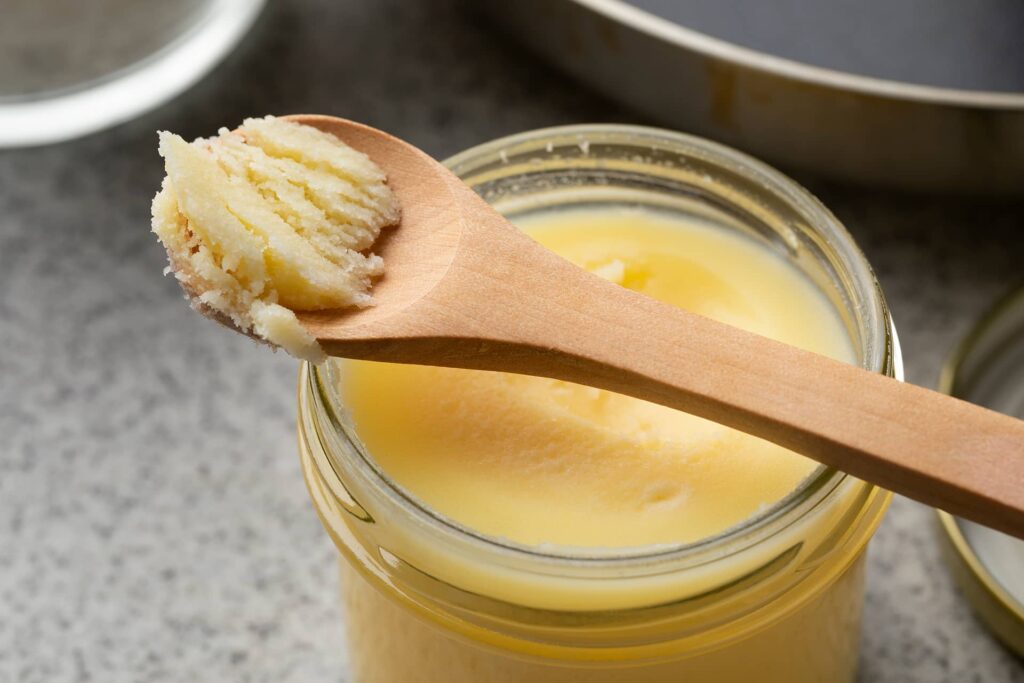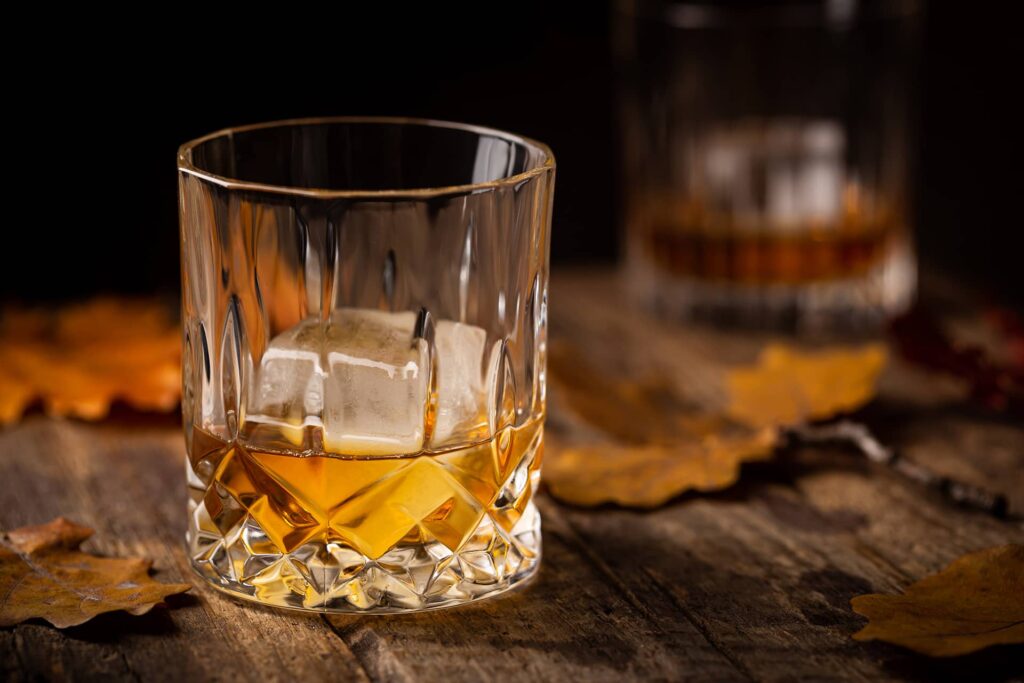Carnivore Diet Visual Food Guide
What foods can you eat on a carnivore diet? Which foods should you avoid, and why?
Creating carnivore meals is a straightforward process when you have the right approach. One effective method is to begin with the selection of a protein source, which can encompass options like meat, poultry, seafood, or eggs.

- Meat, poultry, eggs are your primary foods on a carnivore diet.
- Beef has the highest concentration of vital nutrients.
- Cheese and full-fat dairy are considered “animal-sourced” foods. Many on a carnivore diet enjoy dairy, but it can trigger inflammation or autoimmune problems in many.
- Dairy can also cause increased hunger and make weight loss more challenging.
- A carnivore diet does not include vegetables, grains, or fruit.
Carnivore Diet Suggestions:

Fats You Can Eat on the Carnivore Diet
The choice of fats on a carnivore diet is especially significant. Animal fats, such as beef tallow, duck fat, bacon fat, butter, or suet are all good choices.
What to Drink
Regarding beverages suitable for a ketogenic diet, the primary choices include water as the optimal option, while unsweetened coffee or tea is also acceptable.
- However, it is advisable to abstain from sweeteners, especially sugar. You may add a dash of cream to your coffee or tea, but it's important to be cautious about potential carb accumulation if you consume multiple cups daily.
- An espresso ordered or made with heavy cream is also known as a “breve” in many coffee shops. It’s a delicious high-fat and low-carb variation on the coffee theme. Alternatively, a pat of butter can be added to an espresso for added flavor and satiety.

Alcohol
- An occasional glass of dry wine is permissible, as is an occasional scotch, whiskey, vodka, or tequila.
- Scotch, like other distilled spirits, has no gluten. Remember, though, that calories from alcohol are burned before fats. Drinking alcohol may slow your weight loss progress, so limit this to two drinks per day at most. It’s better to completely abstain if the fastest weight loss is desired.
Foods to Avoid
- On a carnivore diet, there are specific foods to avoid. This category comprises all plant foods and items rich in carbohydrates, encompassing both sugary and starchy varieties. The list of foods to steer clear of includes vegetables, bread, tortillas, muffins, bagels, pancakes, pasta, rice, cereal, cakes, cookies, and other baked goods, as well as anything containing sugar.
- This includes all vegetables, such as cruciferous vegetables.
- Fruit should also be avoided on a carnivore diet. It is very high in carbs which can halt your fat-adaptation process or weight loss, and, well, it isn’t meat. So, it’s not included on a carnivore diet.
- Additionally, fruits and fruit juices should be omitted from your dietary choices.
- Baked goods, from bread to pastries, are to be avoided on a carnivore diet. They are grain products, not animal products. Grains are very high in carbohydrates and frequently cause inflammatory and autoimmune reactions in people. They also tend to make us gain weight.
- Nuts are also not a part of the carnivore diet. They are a plant food and can add significant calories to your diet as well as a big dose of Omega-6 fats. These types of fats can promote inflammation in high quantities. Omega-6 fats and Omega-3 fats (found in fish) should be in no more than a 2:1 ratio for optimum health.
- It may seem obvious, but still needs to be stated that a carnivore diet does not include candy or other sweets. These are some of the most destructive foods for health or weight loss goals. Even a little can rekindle sweet cravings and make a healthy diet much more of an ordeal to follow.
Fats to Avoid on the Carnivore Diet
- Cottonseed oil
- Soybean oil
- Safflower oil
- Sunflower oil
- Corn oil
- Vegetable oil
Processed meats, such as most deli meats, are also something to either be very cautious about, or avoid completely. They usually have sweeteners, fillers, preservatives, starches, and more unhealthy ingredients.
- Hot dogs
- Beef jerky (the sweet commercially made variety)
- SPAM
- Vienna sausages
- Canned corned beef
- Bologna
- Liverwurst
Summary
Focus on a foundation of meat, poultry, fish, and eggs. Complement this with full-fat dairy if desired. To enhance flavor or satiety and fulfill ketogenic macronutrient requirements, incorporate fats like butter, duck fat, tallow, or bacon fat as needed. Avoid sugary and starchy drinks, and for refreshment, opt for water, tea, or coffee. Avoid all vegetables, fruits, and baked goods as well as all sweets or candy.
Help others regain health using the carnivore diet!

Reviewed & approved by
Dr. Shawn Baker, MD & Carnivore.Diet team.
